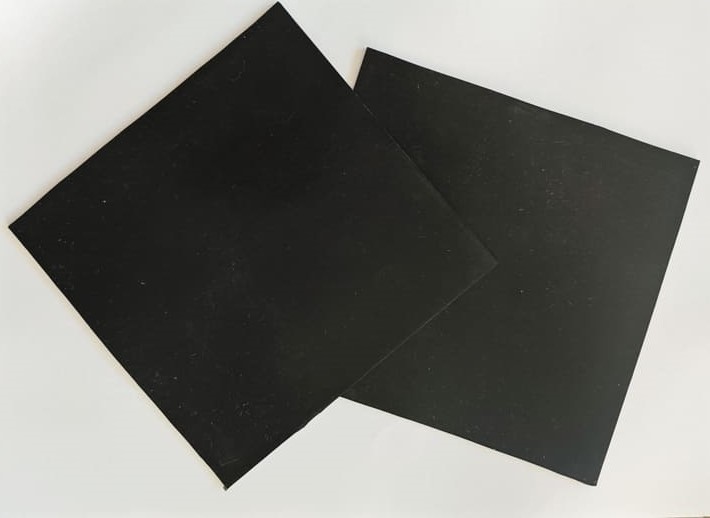Vibration can cause significant damage to machinery, increase noise levels, and reduce overall comfort. Finding the best material for anti-vibration applications is crucial to preventing these issues.
The best materials for anti-vibration are those that can absorb and isolate vibrations effectively, including rubber, neoprene, silicone, and other elastomers.

In this article, we'll explore the most commonly used materials for anti-vibration, their benefits, and why they are effective in reducing vibrations across various industries.
What Are the Common Anti-Vibration Materials?
When choosing a material for anti-vibration1, it's essential to understand the properties of different materials and how they interact with vibration frequencies.
Rubber, neoprene,silicone, and elastomers are some of the best materials for anti-vibration, thanks to their ability to absorb and dissipate energy.
Rubber
- Properties: Rubber offers excellent flexibility and energy absorption, making it ideal for applications where vibrations are frequent and unpredictable. It’s often used in automotive engine mounts, machinery, and construction equipment.
- Applications: Rubber mounts are found in vehicles, industrial machines, and HVAC systems to reduce vibrations and noise.
- Advantages: Rubber is durable, cost-effective, and can handle a wide range of temperatures. It also offers good resistance to wear and tear.
- Disadvantages: While rubber2 is versatile, it can degrade over time when exposed to UV light and extreme temperatures. Additionally, its performance may not be as effective in very high-frequency vibrations.
Neoprene
- Properties: Neoprene is a synthetic rubber known for its resistance to oil, heat, and aging. It also provides good vibration dampening properties.
- Applications: Neoprene is commonly used in industrial machinery, construction, and automotive applications where oils and harsh chemicals are present.
- Advantages: Neoprene is resistant to harsh environments, making it an excellent choice for heavy-duty applications.
- Disadvantages: It is less flexible than some other materials like rubber and may not provide the same level of energy absorption in some cases.
Silicone3
- Properties: Silicone rubber is known for its flexibility, high-temperature resistance, and low compression set. It can perform well in both high and low temperatures and is often used in specialized applications.
- Applications: Silicone is commonly used in aerospace, automotive, and medical equipment to dampen vibrations.
- Advantages: Silicone offers high resistance to heat and aging, making it ideal for high-temperature environments.
- Disadvantages: Silicone is generally more expensive than rubber or neoprene, and it can be more prone to wear under mechanical stress.
Elastomers
- Properties: Elastomers are a family of polymers that exhibit elastic properties, making them ideal for absorbing and isolating vibrations. Types of elastomers used for anti-vibration include polyurethane, nitrile rubber, and EPDM.
- Applications: Elastomers are used in a variety of industrial and automotive applications, including machinery mounts, suspension systems, and vibration isolators.
- Advantages: Elastomers offer excellent durability, resistance to environmental factors, and a high level of energy absorption.
- Disadvantages: Elastomers can be more expensive than traditional rubber, and their performance may vary depending on the specific formulation.
| Material | Key Properties | Common Applications | Advantages | Disadvantages |
|---|---|---|---|---|
| Rubber | Elasticity, durability, energy absorption | Automotive, machinery, HVAC | Cost-effective, flexible, durable | Degrades with UV, ineffective for high-frequency vibrations |
| Neoprene | Resistance to oil, heat, and aging | Industrial machinery, construction | Excellent in harsh environments | Less flexible, limited energy absorption |
| Silicone | Flexibility, heat resistance, low compression | Aerospace, automotive, medical | High heat resistance, durable | Expensive, prone to wear in mechanical stress |
| Elastomers | Elastic, durable, high energy absorption | Machinery, automotive, suspension | Durable, resistant to environmental factors | Expensive, performance varies by formulation |
What Is the Best Material for Specific Applications?
The ideal material for anti-vibration depends on the specific requirements of the application, such as load-bearing capacity, temperature resistance, and exposure to chemicals.
Different materials excel in different conditions, so selecting the right material involves considering the operating environment and vibration frequency.
For Automotive Applications
- Rubber and neoprene are often used in automotive engine mounts, suspension systems, and exhaust systems due to their excellent vibration dampening properties and ability to withstand mechanical stress and exposure to oils and heat.
For Industrial Machinery
- Elastomers such as polyurethane and EPDM are commonly used in industrial machinery due to their high resistance to wear, oil, and extreme temperatures.
- Silicone may also be chosen in high-temperature environments, especially where vibration damping is critical.
For Medical Equipment
- Silicone is preferred in medical devices due to its biocompatibility, flexibility, and resistance to a wide range of environmental factors, including temperature fluctuations and chemicals.
For Aerospace Applications
- Silicone and elastomers are commonly used in aerospace applications, where vibration damping, high heat resistance, and flexibility are required.
For Heavy Machinery
- Neoprene and rubber are used in heavy machinery, where both vibration isolation and resistance to harsh chemicals and oils are crucial.
Conclusion
Choosing the best material for anti-vibration depends on your application’s specific needs. Rubber, neoprene, silicone, and elastomers are all excellent choices, each with unique advantages and considerations. By selecting the right material based on your environment and requirements, you can effectively reduce vibrations, extend the life of equipment, and enhance operational efficiency.
-
Explore this link to understand the various materials used for anti-vibration and their specific applications, enhancing your knowledge on the topic. ↩
-
Discover the unique properties of rubber and its effectiveness in anti-vibration applications, making it a popular choice in various industries. ↩
-
Learn about silicone's advantages in anti-vibration applications, especially in high-temperature environments, and its role in specialized industries. ↩








